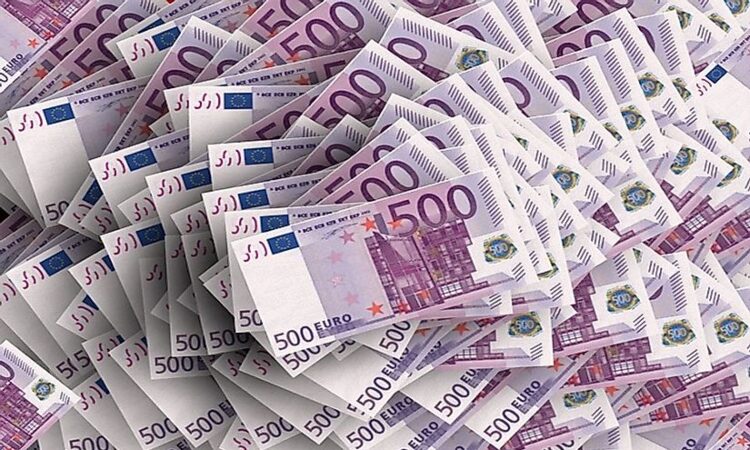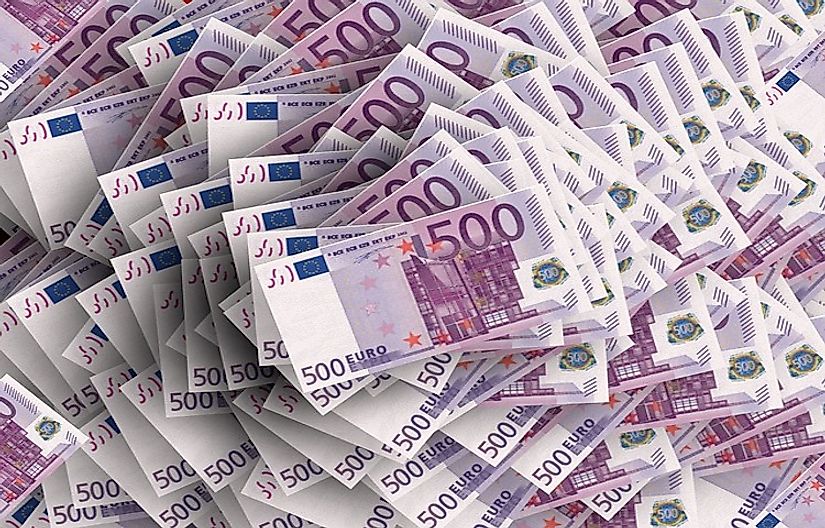

Currency is an important object in the exchange of goods and services around the world. Currencies include banknotes and coins that are used as a legal tender. A total of 28 currencies are used across 50 European countries who are all members of the United Nations. The most common currency used in Europe is the euro, and any country entering the European Union is expected to join the Eurozone. Only Denmark is exempted from using the euro while Sweden is yet to adopt the euro because it is yet to meet the Exchange Rate Mechanism II. The euro is a legal tender in 19 of the 28 countries who are members of the European Union and in five other non-EU members.
The Euro Currency
The euro currency is a result of the EU project for the Economic and Monetary project which was established in January 2002. The currency is used by all the EU member states except three: the UK, Denmark, and Sweden. The euro is also the currency used in all the institutions of the EU and other countries or states outside of the European Union such as the Republic of Kosovo. Over 200 million people outside of the EU use currencies that are pegged to the euro. The euro is the second largest currency reserve as well one of the most traded currency worldwide (after US dollars). The name euro was adopted officially in Madrid in December 1995 and the euro was introduced into the world in 1999. The euro is divided into euro cents (100 cents). The Latin alphabet version is used on the euro in support of linguistic plurality. The euro sign (Є) was created by a Belgian called Alain Billiet with the inspiration for the symbol coming from the cradle of European civilization.
Pound Sterling
Pound Sterling is a currency used in the United Kingdom and also used in other territories and colonies of the UK. The pound is also used in other countries and states like Isle of Man, Falkland Island, and Gibraltar. It is the world’s oldest in-use currency and has continuously been used since its inception. The Bank of England regulates the issuance of the sterling banknotes and coins. The pound is the fourth most traded currency in the world after US dollars, euro, and Japanese yen. The pound sterling was commodity money backed by silver or gold up to some point in time, but it is currently backed by the economy of the countries where it is a legal tender.
Krone And Krona Currencies
Krona and krone is a name given to the currencies used in some of the European countries. The two names translate to crown in English. Danish krone is the official currency of Denmark, introduced in 1875. Danish krone is pegged to the euro. The Norwegian krone is used in Norway and its territories and has existed only electronically since 2012. The currency is the 13th most traded currency in the world. Other countries using krone or krona include Sweden and Iceland.
Fractional Units Of The Currencies
The euro currency is subdivided into 100 cents (referred to as euro cents) in order to distinguish it from other currencies. Krone or krona currencies are subdivided into 100 Øre, derived from a Latin word meaning gold coin. The pound sterling is divided into 100 pence abbreviated as p. Other fractional units include Lipa for Croatian Kuna and ban for leu currencies.
The Currencies Of The European Nations
| Rank | Country | Present currency | Currency sign | ISO 4217 code | Fractional unit |
|---|---|---|---|---|---|
| 1 | Albania | Albanian lek | L | ALL | Qindarkë |
| 2 | Andorra | Euro | € | EUR | Cent |
| 3 | Austria | Euro | € | EUR | Cent |
| 4 | Azerbaijan | Azerbaijani manat | ₼ | AZN | Qapik |
| 5 | Belarus | Belarusian ruble | Br | BYN | Kopeck |
| 6 | Belgium | Euro | € | EUR | Cent |
| 7 | Bosnia and Herzegovina | Bosnia and Herzegovina convertible mark | KM | BAM | Fening |
| 8 | Bulgaria | Bulgarian lev | лв | BGN | Stotinka |
| 9 | Croatia | Croatian kuna | kn | HRK | Lipa |
| 10 | Cyprus | Euro | € | EUR | Cent |
| 11 | Czech Republic | Czech koruna | Kč | CZK | Haléř |
| 12 | Denmark | Danish krone | kr. | DKK | Øre |
| 13 | Estonia | Euro | € | EUR | Cent |
| 14 | Finland | Euro | € | EUR | Cent |
| 15 | France | Euro | € | EUR | Cent |
| 16 | Georgia | Georgian lari | ₾ | GEL | Tetri |
| 17 | Germany | Euro | € | EUR | Cent |
| 18 | Greece | Euro | € | EUR | Cent |
| 19 | Hungary | Hungarian forint | Ft | HUF | Fillér |
| 20 | Iceland | Icelandic króna: second króna | kr, Íkr | ISK | Aurar |
| 21 | Ireland | Euro | € | EUR | Cent |
| 22 | Italy | Euro | € | EUR | Cent |
| 23 | Latvia | Euro | € | EUR | Cent |
| 24 | Liechtenstein | Swiss franc | CHF | CHF | Rappen, also called Centime, Centesimo, and Rap |
| 25 | Lithuania | Euro | € | EUR | Cent |
| 26 | Luxembourg | Euro | € | EUR | Cent |
| 27 | Republic of Macedonia | Second Macedonian denar | ден | MKD | Deni |
| 28 | Malta | Euro | € | EUR | Cent |
| 29 | Moldova | Moldovan leu | L | MDL | Ban |
| 30 | Monaco | Euro | € | EUR | Cent |
| 31 | Montenegro | Euro | € | EUR | Cent |
| 32 | Netherlands | Euro | € | EUR | Cent |
| 33 | Norway | Norwegian krone | kr, – | NOK | Øre |
| 34 | Poland | Polish złoty | zł | PLN | Grosz |
| 35 | Portugal | Euro | € | EUR | Cent |
| 36 | Romania | Fourth Romanian leu | lei | RON | ban |
| 37 | Russia | Russian ruble | ₽ | RUB | Kopeyka |
| 38 | San Marino | Euro | € | EUR | Cent |
| 39 | Serbia | Serbian dinar | RSD or РСД (unofficial: din. or дин.) | RSD | Para |
| 40 | Slovakia | Euro | € | EUR | Cent |
| 41 | Slovenia | Euro | € | EUR | Cent |
| 42 | Spain | Euro | € | EUR | Cent |
| 43 | Sweden | Swedish krona | kr | SEK | Öre |
| 44 | Switzerland | Swiss franc | CHF | CHF | Rappen, also called Centime, Centesimo, and Rap |
| 45 | Turkey | Turkish lira | ₺ | TRY | Kuruş |
| 46 | Ukraine | Ukrainian hryvnia | ₴ | UAH | Kopiyka (копійка) |
| 47 | United Kingdom | Pound sterling | £ | GBP | Penny (pl. Pence) |
| 48 | Vatican City | Euro | € | EUR | Cent |



